Patrick Garbin
About Them Dawgs! Blawg
Since 2009, Patrick's ABOUT THEM DAWGS! BLAWG has remained the only online presence solely dedicated to the history of Georgia Bulldogs football. Although inactive since 2018, the blog still receives hundreds of views on a daily basis. Its most popular posts over the years are featured below. You can view the blog in its entirety HERE.
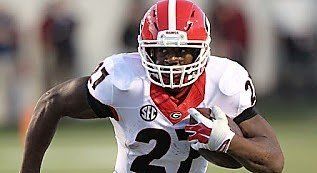
By Patrick Garbin
•
01 Jul, 2015
And, you can probably guess what current Bulldog (photo) is a descendant of those eight determined brothers. Seeing Nick being mentioned in the article reminded me of the connection in characteristics between family members—my family and others—and the compelling and notable connection Chubb shares with several other of his fellow descendants. The Chubb Football Family:
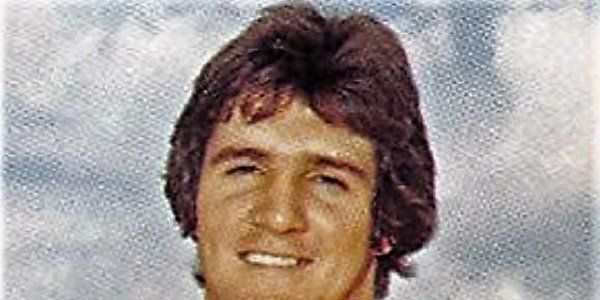
By Patrick Garbin
•
07 Jul, 2014
At Georgia in 1973, Box actually played back when you had to be extra special to see the field as a mere true freshman on head coach Vince Dooley's varsity squad. Box returned kicks, held on placekicks, played a little at wide receiver, and was eventually even tried out at defensive back. Returning a kickoff in the Tennessee game, Box broke his leg, but Dooley still allowed him to travel with the team for the rest of the season, including to the Peach Bowl in win over Maryland. By season's end, Box had earned a letter. He was one of just three, along with placekicker Allan Leavitt and receiver Gene Washington, to eventually become the first Georgia players to earn varsity letters in four seasons (1973-74-75-76) after freshmen became eligible to play college football in 1972. In the season opener of 1974 against Oregon State, Box scored his aforementioned lone touchdown—a 28-yard scoring reception on a halfback pass from Horace King. However, standing at just 5-foot-9, weighing 170-something pounds, and with the Bulldogs loaded in depth at wide receiver, where Box could be utilized was the question. The answer came in his uncanny ability on special teams coverage, especially on kickoffs. "Coach [Erk] Russell was in charge of the kickoff coverage team, and he’d let me lineup anywhere," Box informed me this past week from his home in Birmingham. "When Allan Leavitt was about to kickoff, I’d lineup anywhere—far left, far right, in the middle, wherever. ... We had a bunch of good guys on special teams then. We weren't all that big, but we were fast and always fired up." "I don’t know if I was necessarily better than anyone else, I just hustled down there full speed and always wanted to hit somebody," Box responded after being asked how he stood out from everybody on coverage. "Even when Allan would kick it out of the end zone or a guy would call fair catch on a punt, I'd just hit the closest guy to me. Back then, you could do that. Nowadays, you'd get penalized. Even on offense (playing wide receiver), we ran the ball a lot, so often a defender was just standing there [as the play was ending] and I’d come up to him and jack ‘em!" By his later years at Georgia, Box had become such a nuisance for opposing teams on kick coverage, he started to actually get double teamed at times (yes, on special teams!). "But, that left one of our men not blocked, so they could make the tackle," he added. This is according to a fellow wide receiver and coverage man of the time for the Bulldogs, Steve Davis. You'll notice Davis (No. 80) on the first clip of the video, assisting Box with the tackle: Butch was the best special teams player at Georgia the entire time I was there, and ever since from what I've seen. He was always the first guy down the field on kickoff coverage even though not the fastest player. He had no regard for his body, throwing himself into harms way, and was a great tackler. Butch just had a knack like no other when it came to special teams play. Although he wouldn't tell you so, Box was a fan favorite while at Georgia, as well, and was given a number of nicknames by the Bulldog Nation and the media, including the one mentioned on the back of his "Finest" card—the "Hit Man." "We played back when the stadium wasn't enclosed and there were the track fans," Box recalled. "We’d get off the bus [prior to entering the locker room before the game], and all those people on the railroad tracks would holler. I don’t know why, but some would specifically holler at me. That’d really fire me up! They'd call out my nicknames to me. From the fans, or maybe a newspaper article, I was also nicknamed the "Wild Card" because you never knew where I'd lineup on kickoffs."
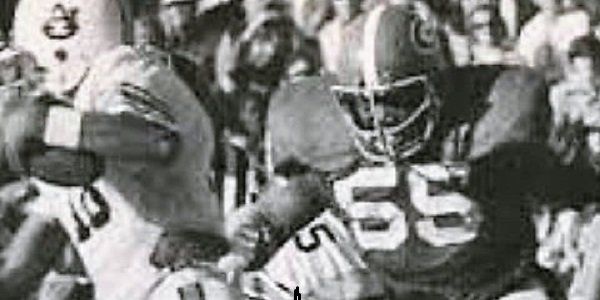
By Patrick Garbin
•
20 Jan, 2014
The lone black man was indeed "Bolo," or Sylvester Boler, who also earned the nicknames of "The Black Blur," "Sly," and "The Sacker" during his tenure at Georgia, yet the number of games he actually appeared in might equal to only just over a full season. As far as the number of games he was actually 100% healthy for, there were only a few--very few. I certainly knew of Boler, even mentioning him three times in less than a year on this very blog as a freshman phenom, an unknown hero in the Auburn series, and his unfortunate gun-pulling incident in the spring of 1975 after having an orange thrown at him. And, primarily because of that incident, I thought Boler had left the program and then simply disappeared. However, there he was in the flesh at the BBQ almost four entire decades after the orange-throwing episode, now surrounded by two additional white guys than before for a total of about a dozen. Although a seemingly complicated individual while at Georgia, Boler's career as a Bulldog could be described rather simply: After playing in just five games in 1973, he was already considered perhaps the greatest linebacker ever at the school. His success, although transpiring in such a short period, was so tremendous, Georgia made Boler the cover boy of the team's 1974 media guide--just him, Dooley, the 1973 Peach Bowl championship trophy, and Boler's defensive MVP trophy for the bowl game gracing the cover. However, as they say, how the mighty can fall. Following an All-SEC campaign in 1974, Boler was evidently thrown off the team for pulling a gun on Andy "Breezy" Reid at McWhorter Hall after the teammate threw an orange at him--an act that many in the media speculated as indicative of racial unrest on the Bulldogs' football team. After sitting out the season, an attempted comeback was cut short when Boler abruptly left the squad for good less than two weeks prior to the 1976 season opener, reportedly without any explanation. "Where've you been, Bolo?" asked someone from the group which circled Boler at the BBQ. It was a valid question. In fact, The Red and Black in January 1978 issued Boler the "dubious" sports honor of "The Whatever Happened To Him Award." Evidently, at least one of Boler's old teammates still wondered the same years later. "Oh, I've been around..." replied Boler with a laugh. I was able to briefly chat with Sylvester that afternoon. Still, about a month and a half later, a friend reminded me that it was the 40th anniversary of The Black Blur's assault on Tennessee and quarterback Condredge Holloway. That, coupled with me recalling this past December the story of Boler singing Christmas carols on Augusta television during the same time in 1973, and I wanted to chat with him further and find out what a number of Bulldog faithful have wondered for many years: Where's The Blur, and whatever happened to him after he left UGA? Although it took me a few weeks, I discovered "where," but first a little more background... "To understand the impact Sylvester made when he debuted in '73, think of when Herschel Walker came on the scene, except seven years earlier and a defensive player," a teammate of Boler's recently informed me. "We had never seen a player quite like him, and fortunately for us, neither had our opposition." Highly recruited out of Augusta's Lucy Laney High School, Boler arrived on the UGA campus with a torn quad muscle, forcing him to miss the first two months of the season. However, once healed, there would be no redshirt season for Boler; he was much too special not to play immediately. Late in the third quarter of Georgia's game at Tennessee in early November, and with the Bulldogs trailing, Boler was inserted at Sam linebacker, becoming the seventh African American to play varsity football at UGA, and the very first as a true freshman. If there was any indication Boler played with much aggression, it came the first time he made contact with an opposing ballcarrier, hitting a downed Tennessee back a little after the whistle and drawing an unsportsmanlike penalty. Regardless, a quarter later, Boler had already registered at least a half-dozen tackles, and Georgia led 35-31. However, behind the arm of quarterback Holloway, the Volunteers reached midfield with 32 seconds remaining. But, then IT happened, and my guess the reason why Boler was nicknamed "The Black Blur" in the first place. (Final three plays of '73 Georgia-Tennessee game on silent coaches film; the first play resulting in Boler's head-knocking, decleating sack of Holloway):
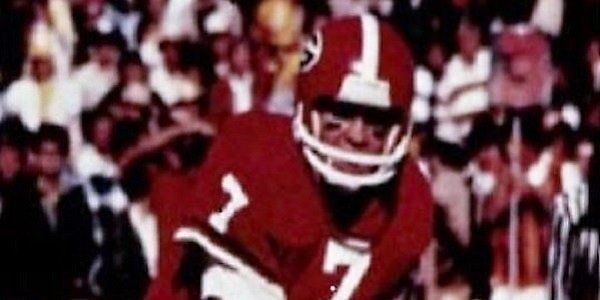
By Patrick Garbin
•
28 Jan, 2013
Over the weekend, I heard some sports-talk radio hosts discussing the playoff success of Baltimore quarterback Joe Flacco entering the Super Bowl: the Ravens are 8-4 when Flacco starts at quarterback, they notably have the same record against the spread in those 12 games, and four of the eight victories have resulted when Baltimore was an underdog. Perhaps file this with the for-what-it's-worth-probably-not-much posts, but I decided to find out the same for Georgia's starting quarterbacks beginning in 1973 (the year college football point spreads became relative to today's lines), figuring every quarterback's career starting record, their record when the Bulldogs entered as underdogs, and their starting record against the spread. Plus, I've added a few historical notations along the way. I realize a quarterback's record as a starter does not fully equate to his overall value; far from it, in fact, in some instances. However, there is some value in whether a player directly guided his team under center to a win, or a loss. This was especially the case recently when we heard the outcry of "Aaron Murray (the team's quarterback, as we all know) can't win the big game." In addition, these rankings are somewhat appropriate since there is a minor but prevailing discrepancy with which actual Georgia quarterback has the best career starting record. ––Of the 28 Georgia quarterbacks to have started in the 40-season period from 1973 through 2012, seventeen started at least 10 games for their careers. Below, these 17 are ranked according to their starting winning percentage, followed by career record in the seasons they started for the Bulldogs. As indicated, I began with 1973 because that was the initial season computers were used to help determine college football point spreads and, according to a guy I know at The GoldSheet, any line in the sport prior to 1973 has "little relation" to today's college football point spreads. However, if the lines prior to '73 aren't considered, the first two seasons of the great ANDY JOHNSON are not recognized. Therefore, for the following analysis, I used "nonrelative" Las Vegas odds from 1971 and 1972 simply so Johnson's career starting record against the spread would be a complete one. Starting Winning Percentage .891 John Lastinger (20-2-1 in '82-'83) .871 Buck Belue (27-4 in '79-'81) .833 DJ Shockley (10-2 in '05) .808 David Greene (42-10 in '01-'04) .794 Matt Stafford (27-7 in '06-'08) .783 Ray Goff (18-5 in '75-'76) .778 Wayne Johnson (14-4 in '85-'88) .750 Andy Johnson (23-7-2 in '71-'73) .710 Quincy Carter (22-9 in '98-'00) .683 Aaron Murray (28-13 in '10-'12) .667 James Jackson (19-9-2 in '85-'87) .646 Eric Zeier (26-14-1 in '91-'94) .646 Jeff Pyburn (15-8-1 in '77-'79) .643 Joe Cox (9-5 in '06, '09) .615 Mike Bobo (16-10 in '95-'97) .545 Matt Robinson (6-5 in '74-'75) .520 Greg Talley (13-12 in '89-'91) ––Here's the discrepancy: Officially, BUCK BELUE has a 27-3 career record; that is what's listed in Georgia's records along with what's in the NCAA record book (which likely acquired the record directly from UGA). And, a 27-3 mark is a .900 winning percentage, or just better than JOHN LASTINGER, which would claim the top stop among Georgia's starting quarterbacks. However, Belue started games four through ten of the '79 season, in which Georgia had a 5-2 record, and all 12 games in both 1980 (12-0 record) and 1981 (10-2). Either my calculator is broken or Belue had an "unofficial" career starting record of 27-4, and not the official 27-3 mark. Perhaps where the discrepancy lies is the meeting with Auburn in 1979 – a game in which Belue started but appeared for only a single play (a two-yard loss after being sacked in his own end zone, yielding an Auburn safety while suffering a broken ankle). Nevertheless, according to the NCAA, a quarterback is considered having started a game if he simply takes his team's first offensive snap. Therefore, a seemingly slight oversight has given credit where it wasn't due, handing JEFF PYBURN a losing start while enabling Belue to sit atop the "official" chart. RECORDS of UGA Quarterbacks with Less than 10 Starts (chronological order): Dicky Clark 1-1; Randy Cook 0-2; Steve Rogers 0-1; Todd Williams 5-3-1; David Dukes 3-1; Preston Jones 1-1; Joe Dupree 0-1; Brian Smith 4-0; Hines Ward 1-4; Cory Phillips 3-2; Joe Tereshinski 2-3 ––Filling in for Mike Bobo in 1996, and Bobo and Hines Ward the year before, BRIAN SMITH started only four games his entire career: Clemson, Vanderbilt, and Kentucky in '95, and Auburn in '96. However, Smith won all four games, including two in which Georgia entered as underdogs (Clemson and Auburn), while the Bulldogs covered each contest, as well. Granted, the final start against Auburn by Georgia's "Mr. Perfect" is worthy of an asterisk since Smith was benched late in the second quarter with Georgia trailing by three touchdowns before Bobo rallied the team in a four-overtime victory. Nonetheless, a start is a start... Top 5 Against the Spread .667 Ray Goff (14-7-1 ATS) .630 Buck Belue (17-10-3 ATS) .600 Matt Robinson (6-4 ATS) .588 Wayne Johnson (10-7 ATS) .560 David Greene (28-22 ATS) Under .500 Against the Spread .348 Jeff Pyburn (8-15-1 ATS) .357 Joe Cox (5-9 ATS) .400 Greg Talley (10-15 ATS) .448 James Jackson (13-16 ATS) ––Of the 17 Georgia quarterbacks to have started 10+ games, notably, only four have a record against the spread under .500. Bringing up the rear is JEFF PYBURN, who covered just one-third of his 24 career starts. However, Pyburn is remarkably Georgia's leader with five wins (and only three losses) as a starter when the Bulldogs were dubbed underdogs (South Carolina in '77, Baylor, Clemson, and LSU in '78, and Georgia Tech in '79). Therefore, if you're keeping up at home, you'll figure that when Pyburn started and Georgia was favored, any wager placed on the Bulldogs was a near-guaranteed loss; the Bulldogs covered just three of 16 games in such circumstances. Most Wins as an Underdog (number of losses) 5- Jeff Pyburn (3) 4- Buck Belue (0) 4- Matt Stafford (2) 4- David Greene (5) ––In the five games HINES WARD started at quarterback while a Bulldog – all occurring in his sophomore season of 1995 – Georgia entered as an underdog for all five (Alabama, Florida, Auburn, Georgia Tech, and Virginia in the Peach Bowl). In comparison, of the Bulldogs' seven other games that season, only once did the team enter as the underdog. Bottom 5 in Underdog Win Percentage (at least 4 games) .111 Aaron Murray (1-8 UND) .200 Hines Ward (1-4 UND) .250 Eric Zeier (2-7-1 UND) .333 James Jackson (2-4 UND) .333 Mike Bobo (2-4 UND) ––Of the 113 games Georgia entered as underdogs from 1973 to 2009, only 55.8 percent of the time the Bulldogs would actually lose the game, including an excellent 12-12 underdog record during that time under Mark Richt. In sharp contrast, over the last three seasons under Richt and with AARON MURRAY starting under center, Georgia is a lowly 1-8 as an underdog. Over the last 40 years (and likely much longer), never have the Bulldogs experienced such a dismal stretch in games they were supposed to lose. Still, in looking at the upcoming 2013 schedule, I spot at least two, and maybe as many as four, regular-season foes that will probably be favored over Georgia. Therefore, Murray should have ample opportunity to improve upon his underdog and "big game" mark.
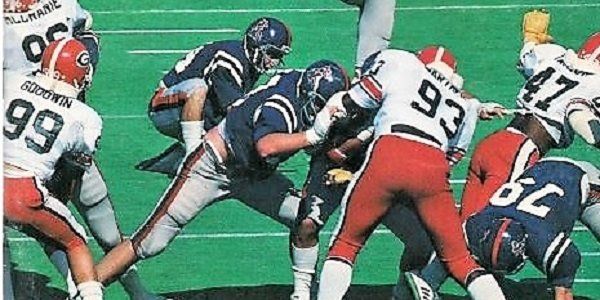
By Patrick Garbin
•
26 Jul, 2011
When I heard last week that Georgia would be wearing new uniforms for the season opener against Boise State, I recalled the last time the Bulldogs tried for a new look. Notice I said "tried," as Georgia, looking more like Grambling State or a team from the now-defunct XFL, presented itself nearly as badly in appearance as it did in performance as the Bulldogs were soundly defeated in their new attire in 2009 by No. 1-ranked Florida. Personally, I don't mind a little alteration in uniform every once in a while by the Bulldogs; however, if the change is to something on the order of what has been rumored, my only hope is Georgia plays much better than it looks (and the new unis are retired before the following Saturday vs. South Carolina). Being a Bulldog history buff, I'm very much a traditionalist; couple that with the fact Georgia has seldom changed its look over the years compared to other football programs (whether helmets, or otherwise), and a drastic change in appearance can be difficult for some old-school fans to swallow. With Coach Wally Butts' arrival in 1939 came the silver helmet-red jersey-silver pants look which would nearly go unchanged for a quarter-century until Vince Dooley came to UGA. Later, Coach Ray Goff kept the then-existing look over his entire seven seasons, except when he darkened the helmet a bit for a single game. Prior to apparently monkeying around with other coaches' money, Coach Jim Donnan often did the same with the Bulldogs' appearance in a short period of time, promptly adding a black stripe to the helmet in 1996, which would only last as long as the coach's tenure at UGA. Donnan also introduced black pants in the 1998 Outback Bowl, which Georgia wore again the following season in yet again, another dismantling by the Gators. Admirably, Donnan reintroduced white pants in 1999 after a 20-year hiatus in memory of deceased assistant coach Pat Watson. In addition, and in no particular order, here is my opinion of the most notable uniform changes in the modern era of Georgia football: Vince Revamps Uniform: With the arrival of 31-year-old Coach Dooley and athletic director Joel Eaves in 1963, changes needed to be immediately made to Georgia's, at the time, losing image and for Vince, that included to the uniform. Believing there was too much emphasis on silver - the color of both the team's helmet and pants, but not even an official color of the school - Dooley introduced red helmets and white pants. Reportedly, some alumni were very skeptical of the change, citing that it could "hurt the team in some way." In the process, Georgia also lost its rallying cry, Go You Silver Britches, at least for a little while. However, added (to the helmet) was the distinguished "G" logo that so many would become familiar with over the following decades. Red Britches: Many Georgia fans identify the Bulldogs' old red pants with Herschel Walker's first game at Tennessee in 1980 but the britches actually debuted two years earlier at South Carolina. Over a period of 11 seasons from 1978 to 1988, Georgia wore the pants a combined 15 times in six different seasons. From 1978 through the 1980 season opener, the Bulldogs donned the red britches in all eight of their games in which they wore road white jerseys. They wouldn't be seen again until the 1985 Clemson game in Death Valley after being suggested by equipment manager Howard Beavers to Coach Dooley. Although Georgia lost only three times it sported the red pants, the unusual britches were retired in 1988 just like they had been unveiled 10 years earlier - with a loss in Columbia by double digits.
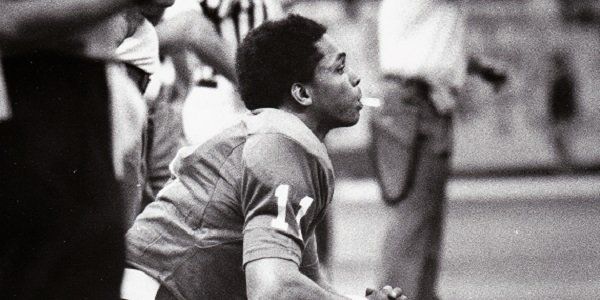
By Patrick Garbin
•
06 May, 2011
Shortly after my last post on the first black football players at UGA, I received an email from a reader asking if I knew who Georgia's first African-American quarterback was and (what number) black quarterback in Bulldog history is newcomer Christian LeMay... Notably, while African Americans started playing major college football in the Northeast and Midwest shorty after the sport's inception, for the most part, black quarterbacks at traditionally white schools did not emerge until much later. For example, not until the early 1950s did a black quarterback appear in the Big Ten and NFL when Michigan State and the Chicago Bears' Willie Thrower was the first for both. In 1890, Michigan's George Jewett was the Big Ten's first African-American football player; however, it would be more than 80 years later before the Wolverines featured a black quarterback (Dennis Franklin, 1972-1974). When southern college athletics finally integrated, the black quarterback was a major part of the movement. At Georgia, just a little over four years after the first African Americans saw varsity action versus Baylor in 1972, the first black Bulldog quarterback appeared in a game when third-stringer Tony Flanagan was inserted late in a 41-0 blowout win at Clemson in 1976. Flanagan promptly guided the Bulldogs on an 11-play, 66-yard drive, running 6:04 off the clock, capped by a Willie McClendon touchdown run. Four weeks later against Vanderbilt, Flanagan was placed under center for Georgia's final two possessions and each, like before against Clemson, resulted in a touchdown. Flanagan's third and final game where he saw significant action came in the 1977 Sugar Bowl against top-ranked Pittsburgh. As I mentioned in a piece I wrote about a year ago following Zach Mettenberger's dismisal, Flanagan's performance versus the Panthers was forgettable (albeit just four plays); of course, besides perhaps the punting of Bucky Dilts, the entire team played rather horribly. However, even amidst the embarrassing loss, at the time, the game was of the most significance for Georgia, and not just because Farrah Fawcett was in attendance... As Pitt coach Johnny Majors was still having his MVP quarterback Matt Cavanaugh throw bombs with a 24-point lead late in the game, while Tony Dorsett appeared focused on a Sugar Bowl rushing record and complaining about Bulldog fans "aggrevating" him all week, Georgia football was planning for its future and, in the process, experiencing somewhat of a transformation. When departing senior and No. 2-quarterback Matt Robinson came off the field midway through the final quarter (senior and first-stringer Ray Goff had been removed earlier) and sophomore Flanagan entered the game, it was an indication for the first time the Bulldogs' historical move to an African American as their primary quarterback, as Flanagan would undoubtedly be the front-runner the following season. "Whether I'm on the first string, the second string, the third string or even no string at all," said Flanagan following the Sugar Bowl loss and looking ahead to the next season. "I just want to make some contribution." Unfortunately, as I mentioned in my Flanagan-Mettenberger piece, during the summer of 1977, Flanagan was ruled academically ineligible and would never play again for the Bulldogs (but would eventually persevere).
